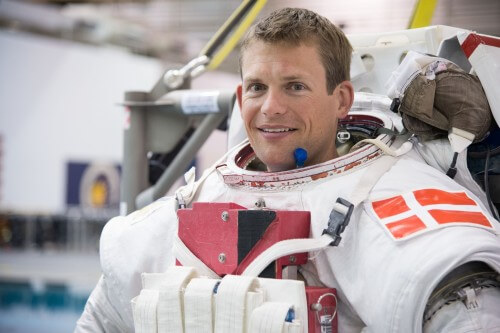Prof. Yair is an expert in the atmospheric and space sciences, in particular lightning storms, and served as the coordinator of the Israeli experiments in the space shuttle Columbia mission

The Danish Space Agency contacted Prof. Yoav Yair, currently Dean of the School of Sustainability at the Interdisciplinary Center in Herzliya and asked him to join an experimental team in which the Danish astronaut Andreas Mogensen will photograph lightning storms, following a similar experiment Conducted by the late Ilan Ramon on the Columbia ferry. Prof. Yair is one of the team of researchers who planned the experiment and analyzed its results in real time. Prof. Yair served as the coordinator of the scientific team.
Mogelsen, who has been training as an astronaut at the European Space Agency since 2009, is expected to take off on September 2 to the space station together with Russian cosmonaut Sergey Volkov in the TMA-18M spacecraft and return ten days later together with cosmonaut Sergey Padalka. The short foray was made possible because two of the space station crew members are planned to stay there for a whole year, so only a partial replacement of the crew is necessary, and therefore there is room in the Soyuz for other passengers as well. On previous occasions, these were space tourists, but now, as mentioned, a full-fledged astronaut will do it.
Prof. Yair is an expert in atmospheric and space sciences, and in particular lightning storms on Earth and other planets, atmospheric electricity, the effects of the sun on the atmosphere and climate, air pollution and phenomena in the upper atmosphere such as lightning sprites.
Gravitational waves and antimatter
"Mogelsen is of course going to represent the European Space Agency, but the space agency of his country - Denmark will be responsible for the scientific experiments he will perform, including an experiment similar to one of the experiments performed by Ilan Ramon in Colombia - observation of lightning storms from space. This is in preparation for a more comprehensive experiment that will go up to the station in 2017. They want to study lightning storms and the emission of energetic particles such as X-rays and gamma rays, which in recent years have been discovered to be emitted by lightning, and even positrons - anti-electrons, meaning anti-matter."
The experiment, known as THOR, will investigate what happens above lightning storms: the penetration of the lightning storm through the cloud cover up to the stratosphere, lightning in the stratosphere and methosphere formed above thunderstorms, including sprites, jets and giant jets. In addition, the experiment will examine the internal gravity waves in the glowing air layer during the storm created by heat conduction.
"The topic is important for our understanding of the role of thunderstorms in the dynamics of the atmosphere and in climate variability," writes the Danish Space Agency.
"They know my expertise in observations of lightning from space, in addition to the experiment with Ilan Ramon from Colombia, I participated in the reenactment of the experiment by the Japanese astronaut Satoshi Furkawa who photographed the lightning from the International Space Station with a color camera in 2011. In this experiment we caught some beautiful lightning sprites and I published an article about it in the professional press." Prof. Yair says.
Prof. Yair explains that the experiment is not going to be carried out under ideal conditions: "Mogensen is going to watch with a Nikon D4 camera that is on the station through a small window that looks like a submarine's window in the Pierce airlock that is in the Russian module. He will have to observe from there on the earth passing below him at a speed of eight kilometers per second, and try to catch the target"
"My contribution was in planning in advance when and in which area he should look in order to increase the chance of looking at good targets. Not long ago I took a two-week sabbatical at the Danish Space Center. I worked with the Danish scientists responsible for the experiment and they attached me as a researcher to the experiment. I will be in Denmark during the launch and will accompany this experiment in real time. I will help plan the observations, determine targets and watch when the space station passes over them, as well as help analyze the data that will come down in almost real time."
"In the two weeks that I was at the Technological University of Denmark, we planned the operational procedures - how to write a forecast, how to choose targets and how to define for the astronaut when and at what angle he should look. We also practiced these procedures with the Belgian Control Center (B.USOC - Belgian User Science Operations Center) which will eventually transfer the data to the European Space Agency's control center in Darmstadt - only they have the authority to talk to the astronaut. All of this, of course, in coordination with the control centers in Houston and Moscow."
In conclusion, Prof. Yair says that he is satisfied that the method he co-invented in the late nineties and which was developed over the years, including in an experiment by Ilan Ramon and the Columbia team, is proving itself to be a successful scientific concept that is repeated over and over again.

5 תגובות
Don't trust these spaceships
Professor Aryeh Braunstein from Tel Aviv is one of the lightning experts. how is he.
For my father, today, July 20th, marks 46 years since the landing on the moon. Update, thank you
The Jewish head…